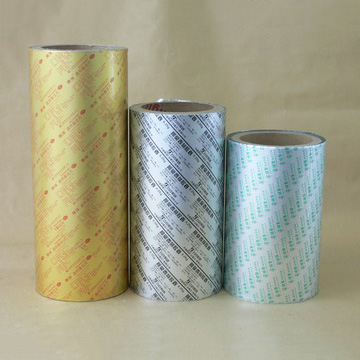Analysis of precautions in the production process of PTP aluminum foil printing and coating
2022-12-12Analysis of precautions in the production process of PTP aluminum foil printing and coating
In the national standard of Aluminum Foil for Pharmaceutical Packaging, there are clear requirements for the surface quality of printed words of pharmaceutical aluminum foil, as well as physical and chemical indicators for the performance of protective layer and adhesive layer, so as to protect the pharmaceutical PTP aluminum foil with good barrier, health and safety, heat sealing and good physical and mechanical properties. In order to meet the above requirements in the production process of PTP aluminum foil printing and coating, it is necessary to be familiar with the performance of the raw materials used, and pay attention to the following issues in the operation process.
Precautions for production
1. Grasp the characteristics of aluminum foil and printing ink
The raw material used in the production of PTP aluminum foil is pure aluminum foil for industrial use. Generally, the thickness is 0.02mm, the tensile strength is 98kPa, the rupture strength is 90kPa, the surface is clean and flat, without wrinkles, indentation damage, flakes of fluorescent substances, and the surface wetting tension is not less than 32. The requirement for the pinhole size of pharmaceutical aluminum foil is that the pinhole with diameter of 0.1~0.3mm shall not be more than 1/m2. Because the pinhole in the aluminum foil is a penetrating defect, the drug effect will be reduced or deteriorated if it is invaded by oxygen, water vapor and light, so the requirements for pinhole degree are very strict; In addition, if the thickness of aluminum foil exceeds the required deviation (10%), it will affect the coating amount of the adhesive layer and the protective layer, which should be noticed by the operator.
Printing inks for aluminum foil are mainly divided into two categories:
① Polyamide ink. This kind of ink has good adhesion, dispersion, gloss, abrasion resistance, solvent release and softness for the printing of various substances. It is mostly used for the printing of plastic films. When used in the printing of aluminum foil materials, the excellent performance of this kind of ink can be shown, and its heat resistance can also meet the requirements of aluminum foil printing
② The special ink for aluminum foil, which is mainly composed of vinyl chloride acetate copolymer synthetic resin/acrylic acid resin, has bright color, high concentration, strong adhesion to aluminum foil and good transparency. However, due to the high volatility of solvent when used for gravure printing, when used for surface printing of medical PTP aluminum foil, it is easy to cause ink drying and deposition in the ink hole of gravure roller, resulting in paste phenomenon. Therefore, it is necessary to carry out necessary pretreatment for the deposition and freezing of the ink. The method is to stir the deposited and frozen ink or increase the temperature (water bath). The coating online learned that if the storage time of the ink is too long, the ink will deposit, resulting in more resin solution on the upper layer of the ink, more pigments on the lower layer, light color on the upper layer, and deep color on the lower layer. It should also be mixed evenly before use.

2. The amount of solvent added to the ink should be appropriate
When the ink with high viscosity needs to be diluted with a large amount of diluent, the diluent should be added while stirring to make the diluent evenly distributed throughout the ink. The measuring time of the article thermometer is about 20-30s. The indoor temperature and humidity have an impact on the ink concentration. It is best to use the ink concentration detector to determine the amount of solvent added, and measure the ink concentration at regular intervals according to the change of temperature and humidity. When intaglio printing is used to print aluminum foil products, the ink concentration is too low, which will cause the color of the printed text pattern to be not bright, and there will be paste at the screen; If the ink concentration is too high, there will be cracking at the drawing, which not only wastes ink, but also easily causes uneven printing surface and is not beautiful. In addition, the best ink should be selected according to the speed of the aluminum foil printing coater and the inking hole depth of the printing gravure roller.
3. The adhesive shall meet the requirements
The adhesive of PTP aluminum foil is coated on the inner side of the aluminum foil. Its function is to make the aluminum foil and the medicinal PVC hard sheet can be pressed firmly, so that the drugs in the plastic hard sheet blister can be separated from the outside, so as to achieve the purpose of sealing the drugs. In the process of filling drugs for heat sealing, the adhesive layer is activated by the action of hot pressing, so that it is firmly bonded with the PVC plastic hard sheet. This requires that the adhesive layer and the PVC resin should have good thermal sensitivity and compatibility with the substrate.
4. The drying temperature and time should be controlled during printing and coating
The printed graphics and text, adhesive layer and protective layer need to be dried during the coating process. The drying of aluminum foil surface coating needs a process, so it needs to stay in the drying channel of the equipment for a certain time, which depends on the speed of the coating machine winding and the temperature selected in the drying channel. Because the thickness of aluminum foil material is different, the physical and mechanical properties are different, and the thermal expansion, shrinkage and extensibility of the material are also different when operating in the equipment, so the aluminum foil should not stay at very high temperature for too long, otherwise the aluminum foil is also prone to wrinkling and surface discoloration. Generally, it is advisable to control the temperature of drying tunnel at 170-210 ℃.
5。 Analysis of printing coating speed, coating tension, coating thickness and adhesion quality
The coating thickness of the adhesive layer during the printing and coating process has a great impact on the bonding fastness of the plastic PVC hard sheet. The adhesive layer is too thin, and the bonding fastness will be reduced due to lack of material when hot-pressing the PVC hard sheet; The adhesive coating is too thick, which not only increases the cost, but also lengthens the drying time, so it needs to be controlled within the appropriate thickness range. The coating thickness of the adhesive layer is affected by the concentration of the adhesive, the coating tension, the coating speed, and the number of anilox rolls. According to the coating online, when the shape, depth, number of lines per inch and the line pressure between the two rollers are adjusted, the thicker the coating is, the smaller the coating tension is, and the faster the coating speed is. Therefore, the thickness of the adhesive layer is generally adjusted by the concentration of the adhesive and the tension of the coating machine. Different types of aluminum foil have different requirements for the thickness of the adhesive layer. Generally, the thickness of the coating should be controlled at 3.5-7.0mm. In the process of aluminum foil printing and coating, the machine speed, temperature and tension are not only related to each other, but also constrained each other. The quality of their cooperation is directly related to the quality of aluminum foil printing and coating.
Related articles
-
In March 2012, the Department of Consumer Products Industry of the Ministry of Industry and Information Technology said that the "Pharmaceutical …
-
Pharmaceutical packaging refers to a processing process that uses appropriate materials or containers and packaging technology to divide (fill), seal,…
-
In the next ten years, pharmaceutical packaging companies will have to face the pressure of many factors, such as user requirements for additional saf…

